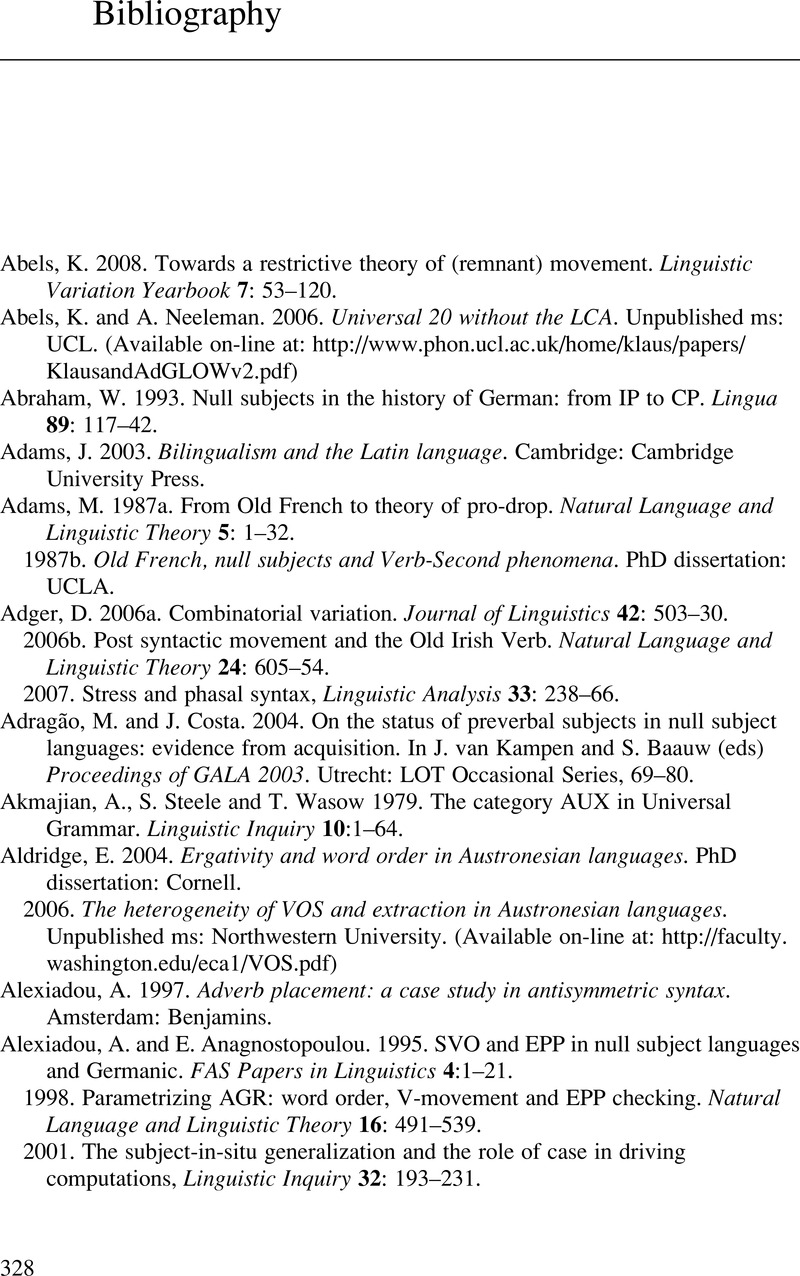Book contents
- Frontmatter
- Contents
- Acknowledgements
- Introduction: parameters in minimalist theory
- 1 A deletion analysis of null subjects
- 2 Null Subject Parameters
- 3 Control into finite clauses in partial null-subject languages
- 4 Semi null-subject languages, expletives and expletive pro reconsidered
- 5 The null generic subject pronoun in Finnish: a case of incorporation in T
- 6 ‘Free’ inversion in Romance and the Null Subject Parameter
- 7 Subjects, Tense and verb-movement
- 8 Varieties of French and the Null Subject Parameter
- Bibliography
- Index
- References
Bibliography
Published online by Cambridge University Press: 04 August 2010
- Frontmatter
- Contents
- Acknowledgements
- Introduction: parameters in minimalist theory
- 1 A deletion analysis of null subjects
- 2 Null Subject Parameters
- 3 Control into finite clauses in partial null-subject languages
- 4 Semi null-subject languages, expletives and expletive pro reconsidered
- 5 The null generic subject pronoun in Finnish: a case of incorporation in T
- 6 ‘Free’ inversion in Romance and the Null Subject Parameter
- 7 Subjects, Tense and verb-movement
- 8 Varieties of French and the Null Subject Parameter
- Bibliography
- Index
- References
Summary

- Type
- Chapter
- Information
- Parametric VariationNull Subjects in Minimalist Theory, pp. 328 - 356Publisher: Cambridge University PressPrint publication year: 2009

